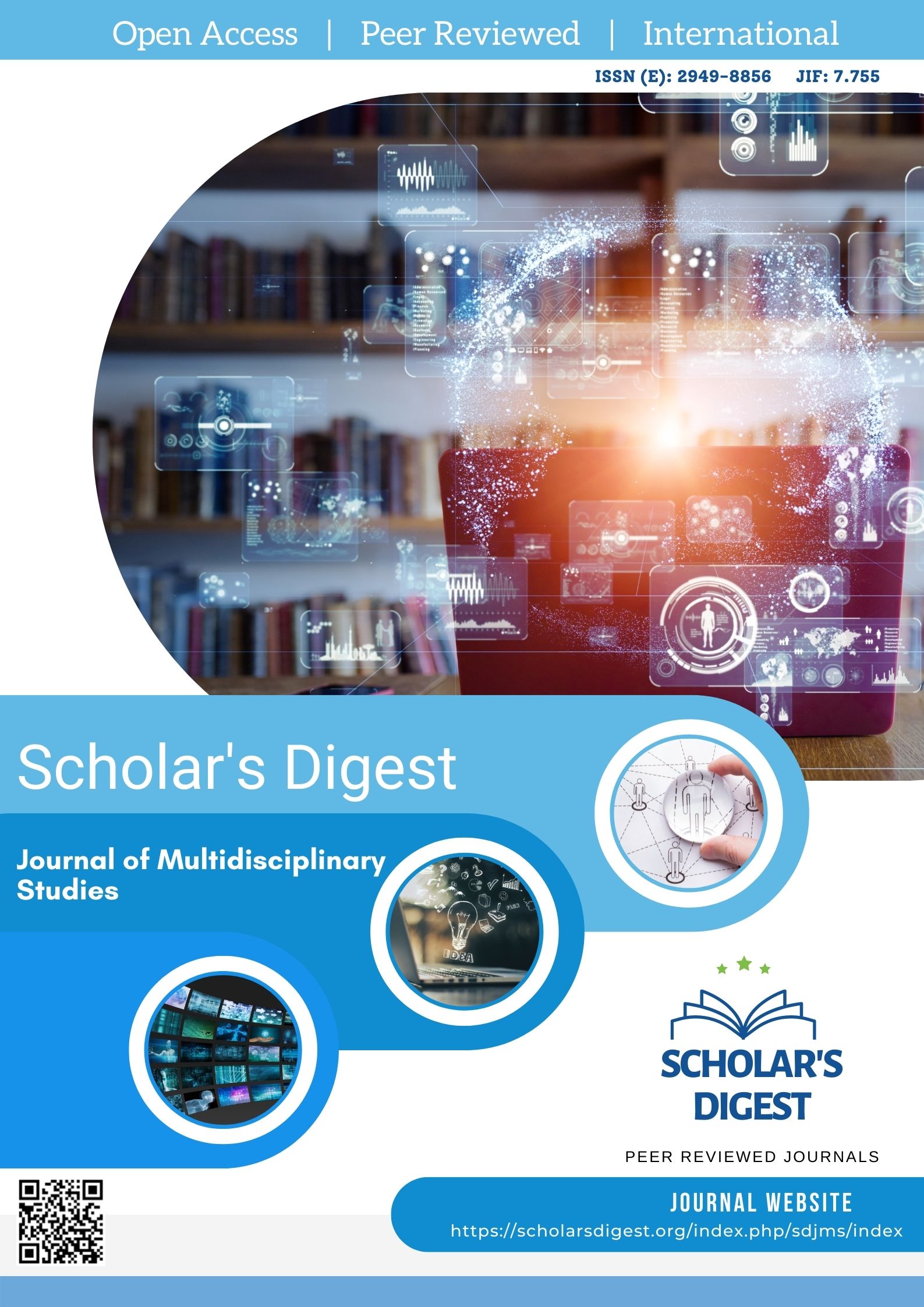THE IMPACT OF AL ON TRANSLATION STUDIES: CHARACTERISTICS, FIELDS AND SIGNIFICANCE
Keywords:
Artificial Intelligence; Translation Studies; Neural Networks.Abstract
With the developing of artificial intelligence in translation research, a new perspective has emerged—examining translation studies through the lens of artificial intelligence. This approach is fundamentally rooted in AI and is distinguished by its intelligence, contextual awareness, and integration. The key research areas within this field include assessing translation quality and effectiveness, analyzing translation processes, and exploring translation pedagogy. The rise of AI-driven translation studies not only encourages a reassessment of theoretical models but also drives methodological transformation, broadening and deepening both translation research and teaching.
References
Church K W and Hovy E H. (1993). Good applications for crummy machine translation[J]. Machine Translation, 1993, 8: 239-258.
Cui, Y. & Zheng, B. H. (2021). Consultation behaviour with online resources in English-Chinese translation: An eye-tracking, screen recording and retrospective study[J]. Perspectives, 2021 (5): 740- 760.
Crocker, M. W. (2010). Computational psycholinguistics [A]. In A. Clark, C. Fox. & S. Lappin (eds.). The Handbook of Computational Linguistics and Natural Language Processing [C]. Hoboken, NJ: Wiley-Blackwell, 2010: 482-512.
Carl, M. (2020). Translation, artificial intelligence and cognition [A]. In F. Alves. & A. Jakobsen (eds.). The Routledge Handbook of Translation and Cognition [C]. New York: Routledge, 2020: 500- 516.
Chiarello C, Welcome S E, Leonard C M. (2012). Individual differences in reading skill and language lateralisation: a cluster analysis[J]. Laterality: Asymmetries of Body, Brain and Cognition, 2012, 17(2): 225-251.
Colina, S. (2003) Translation Teaching: From Research to the Classroom[M]. New York: McGraw-Hill. 2003.
Carl, M., & Schaeffer, M. (2017) Sketch of a noisy channel model for the translation process [A]. In S. Hansen-Schirra, O. Czulo. & S.
Hofmann (eds.). Empirical Modelling of Translation and Interpreting [C]. Berlin: Language Science Press, 2017:71-116
FENG Z. (2018). Parallel Development of Machine Translation and Artificial Intelligence [J]. Journal of Foreign Languages,2018(6): 35-48.
García, A. (2019) The Neurocognition of Translation and Interpreting [M]. Amsterdam: John Benjamins, 2019.
GENG F & HU J. (2023) New Direction for Post-Editing by Artificial Intelligence Translation: A Case Study of ChatGPT Translation[J]. Foreign Languages in China, 2023,20(03):41-47.
García, A. (2019) The Neurocognition of Translation and Interpreting [M]. Amsterdam: John Benjamins, 2019:2.
Hansen, S. J., McMahon, K. L. & de Zubicaray, G. I. (2019) The neurobiology of taboo language processing: fMRI evidence during spoken word production [J]. Social Cognitive and Affective Neuroscience, 2019(3): 271-279.
Harris B, Sherwood B. (1978) Translating as an innate skill[A]. In D. Gerver & H. Sinaiko (eds), Language Interpretation and Communication[C]. New York: Plenum Press. 1978: 155-170.
HU K, HEI Y. (2020) Translation Studies in the Digital Humanities: Features, Research Areas and Implications[J]. Chinese Translators Journal,
2020,41(02):5-15+187.
HU K. (2012). Corpus Translation Studies: Connotations and Implications[J]. Journal of Foreign Languages, 2012,35(05):59-70.
Ibáñez, A., Sedeño, L. & García, A. M. (2017) Exploring the borderlands of neuroscience and social science [A]. In A. Ibáñez, L. Sedeño. & A.
M. García (eds.). Neuroscience and Social Science: The Missing Link [C]. New York: Springer. 2017: 1-17.
Lu Z & Zheng Y. (2022) On the Fusion and Integration of Experimental Paradigm and Contextual Paradigm in the Study of Cognitive Processes of Translation[J]. Chinese Translators Journal, 2022,43(03):20-28.
Downloads
Published
Issue
Section
License

This work is licensed under a Creative Commons Attribution-NonCommercial 4.0 International License.








